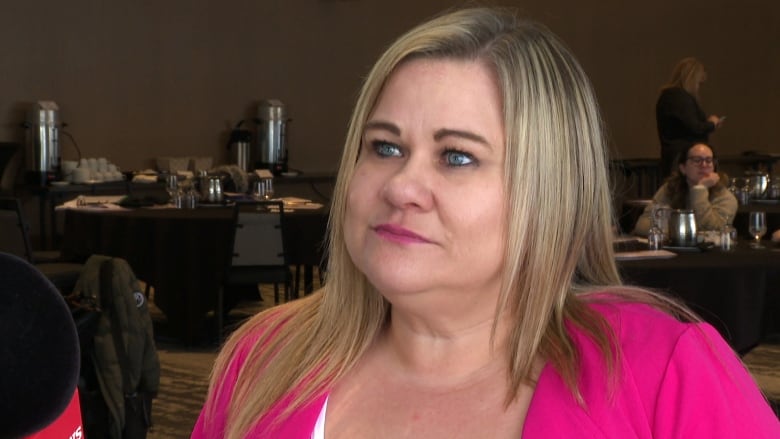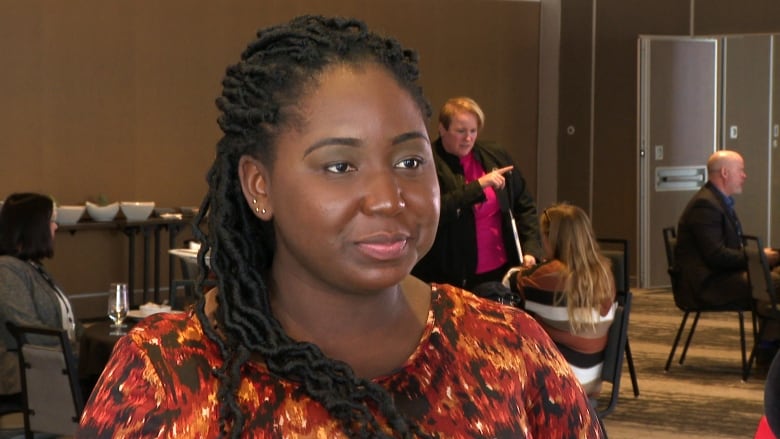Ontario seeing more Newfoundlanders being trafficked, says Durham victim services – CBC
The executive director of victim services in one of Canada's human trafficking hotspots says she's seeing an increase in people from Newfoundland and Labrador in her caseload.
Krista MacNeil is the executive director of Victim Services of Durham Region, encompassing the Greater Toronto Area towns of Ajax, Oshawa, Whitby and several smaller communities.
As a Mi'kmaw woman born and raised in Stephenville, N.L., MacNeil said she can't help noticing when victims from her home province are referred to her organization.
“My heart will always be in Newfoundland,” she said Friday. “Any time I see someone who's been victimized it pulls at my heartstrings regardless of where they're from, but definitely there's a passion there … when I see they come from my home province.”
Prosecutors in Newfoundland and Labrador are seeking the province's first conviction for human trafficking. MacNeil said the lack of court cases doesn't mean it's not a problem, and the fact she's seeing victims turn up in Ontario indicates victims are being trafficked to other jurisdictions.
Durham, situated along Highway 401 through the heart of southern Ontario, has become a hotbed for criminal networks transporting people across the country. The victim services office has seen a 263 per cent increase in referrals for human trafficking cases over the past four years.
MacNeil said she doesn't have exact numbers on how many came from Newfoundland and Labrador but there's been a noticeable increase over that period.

Women and girls are sometimes trafficked from Newfoundland and Labrador and moved to Ontario, MacNeil said, or they moved to Ontario for other reasons and were groomed and entrenched in the sex trade while there.
“The unique challenge when we see individuals that are trafficked and they're from Newfoundland is that they are at an increased vulnerability because they're so far away from home. They're so far away from their social support system. So with that obviously comes an increased risk for trafficking. Traffickers will look to exploit any vulnerability.”
MacNeil said all the cases are disturbing but some cross into an extreme level.
“What we have seen throughout the pandemic is an increase in the brutality used against victims, and recently we did have one particular client from [Newfoundland and Labrador] where unfortunately some of the forms of abuse that they're enduring is equivalent to what prisoners of war face. It's the same torture tactics.”
What does human trafficking look like?
Kendra MacKinnon, a specialist with the Canadian Centre to End Human Trafficking, says people usually have the wrong idea when they think about this crime.
“Oftentimes, people think human trafficking is like the movie Taken, right? Somebody is kidnapped off the side of the street and then is forced into sexual exploitation.”

That's rarely the case, said MacKinnon. She spoke at a conference held by the Association For New Canadians in St. John's last week on Human Trafficking Awareness Day, sharing information with different groups about how trafficking happens and how to spot the warning signs.
In about one-third of the cases reviewed by centre, MacKinnon said people were trafficked by their intimate partner. She said that's often born of a need that leaves someone vulnerable, such as paying rent or feeding a drug dependency.
“It's all rooted in intimate partner violence, and power and control,” she said.
Groups like the Association For New Canadians want people to be on the lookout in Newfoundland and Labrador. It started a program supporting trafficking survivors called Support, Empower, Access — or SEA, for short.

Geraldine Ankrah, SEA's project lead, said most people don't understand everything encompassed by the term “human trafficking,” which can refer to the recruitment, transportation, harbouring or manipulation of a person experiencing sexual exploitation or forced labour.
Ankrah said marginalized women, especially new immigrants to Canada, are exceptionally vulnerable.
“People should not think human trafficking is not something that's so dramatic that it cannot happen here,” said Geraldine Ankrah, SEA's project lead. “It can happen here.”
Information session leads to results
MacNeil said one of the most common methods is what is referred to as the “Romeo pimp” — a man who takes a keen interest in a young woman and earns her trust through an intimate relationship. It takes a turn when the man coerces the victim into sex work.
“Oftentimes they don't even realized they're being trafficked. They think they've consented to what's happening to them,” she said.
MacNeil said most of the victims her office supports are under the age of 24. She said the average age that recruitment begins is about 13, and the average age by which they are fully entrenched in the sex trade is 17.
She said some of the warning signs in young victims include behavioural changes, new friend groups, calls from unknown numbers, tattoos or branding marks, expensive gifts without a clear explanation, hotel key cards, and a drop in grades at school.
Victim Services of Durham Region holds monthly virtual training sessions through its website, educating parents and caregivers on the warning signs. MacNeil said one of the recent sessions resulted in a couple recognizing the signs in their 16-year-old daughter, and setting up a meeting with victim services. The girl told a crisis counsellor that she'd bought an expedited passport and was about to fly to the Middle East after being lured online.
MacNeil wants parents in Newfoundland and Labrador to be just as vigilant and informed.
“I know Newfoundlanders continue to be vulnerable to this heinous crime as I see them represented in our victim statistics,” she said. “I could not just stand by treating this as an Ontario problem knowing so many women and girls from Newfoundland are being victimized.”
 ABOUT PBJ LEARNING
ABOUT PBJ LEARNING
PBJ Learning is a leading provider of online human trafficking training, focusing on awareness and prevention education. Their interactive Human Trafficking Essentials online course is used worldwide to educate professionals and individuals how to recognize human trafficking and how to respond to potential victims. Learn on any web browser (even your mobile phone) at any time.
More stories like this can be found in your PBJ Learning Knowledge Vault.
This “Eyes on Trafficking” story is reprinted from its original online location.
ABOUT PBJ LEARNING
PBJ Learning is a leading provider of online human trafficking training, focusing on awareness and prevention education. Their interactive Human Trafficking Essentials online course is used worldwide to educate professionals and individuals how to recognize human trafficking and how to respond to potential victims. Learn on any web browser (even your mobile phone) at any time.
More stories like this can be found in your PBJ Learning Knowledge Vault.
